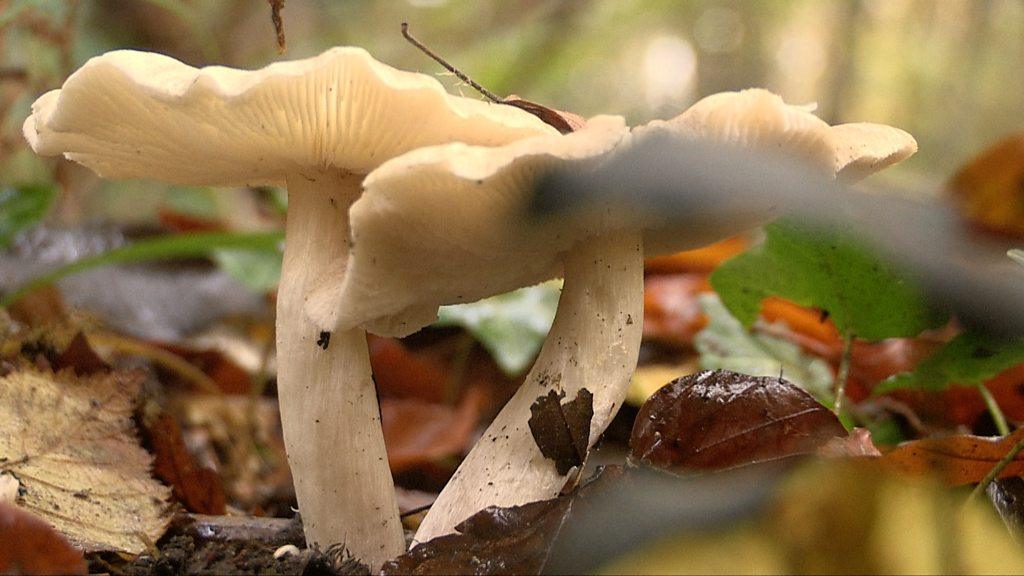'London is a forager's paradise, it's very diverse'
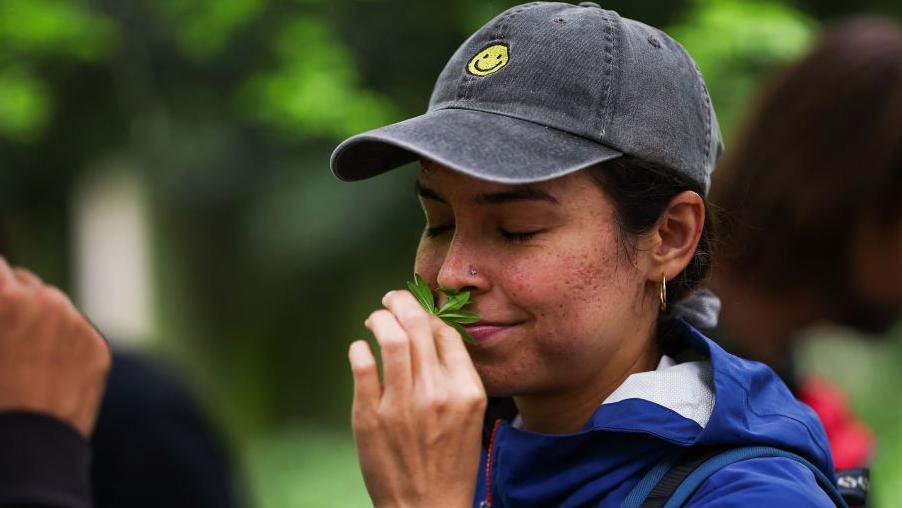
- Published
"London is a forager's paradise" full of a diverse range of plants that can be eaten, says John Rensten, foraging expert and author.
"You come into an area like London and plenty of the country's wild plants are having a go at growing there," he adds.
He's not the only who has been inspired by London's green spaces in this way.
For others in the capital, the activity is a family tradition that revives happy childhood memories or offers inspiration in the kitchen.
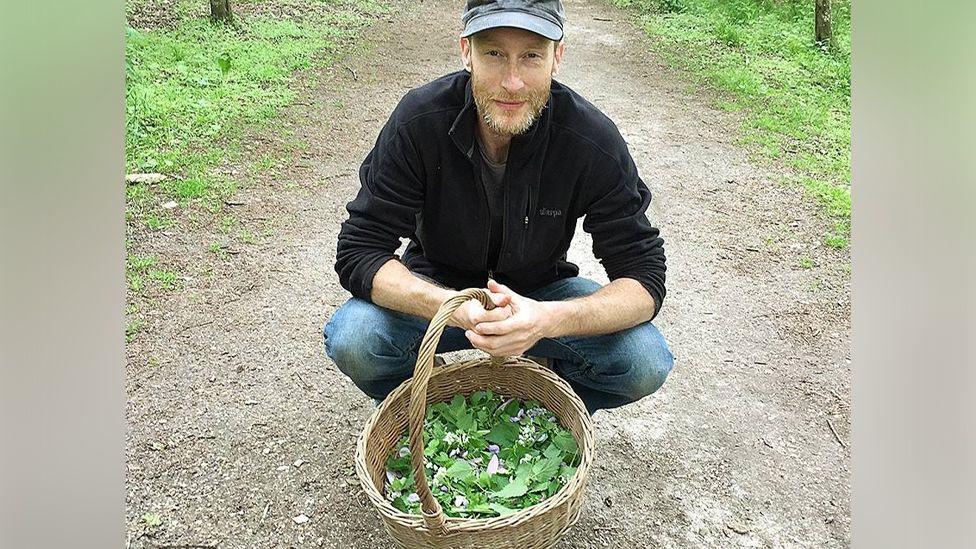
John Rensten says many wild plants are "having a go" at growing in London
Mr Rensten is the founder of Forage London which organises courses and walks across the capital.
He believes that through "sustainable and educated" foraging, people could become "environmental stewards" who champion their local landscape.
One of the locations it uses is Tower Hamlets Cemetery Park, which Mr Rensten says is "the most fertile and diverse square mile of the city".
The Victorian cemetery closed to burials in 1966 and became a designated public park and local nature reserve.

Kenneth Greenway, Tower Hamlets Cemetery Park manager, shows people how to forage in the "fertile" park
"I started getting really obsessed with foraging 25 years ago," Mr Rensten says.
While living in Stoke Newington, he foraged and ate around 175 different varieties of plants from one park.
"Foraging turns an uninteresting landscape into something you become involved with," he added. "You're watching plants progress throughout the seasons."
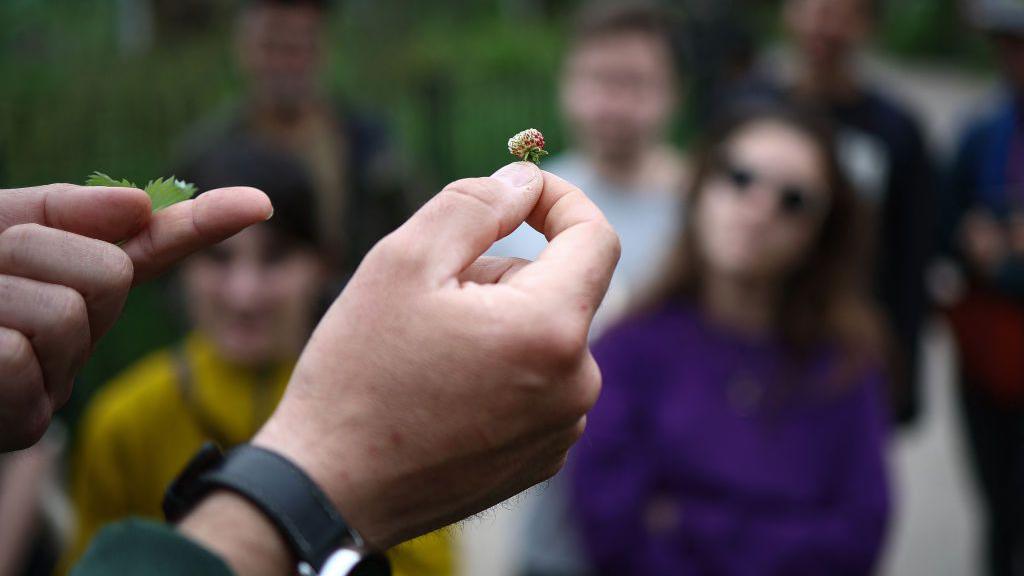
People are shown a wild strawberry - quite unlike what can be found in supermarkets - in Tower Hamlets Cemetery Park
Louise Avery, who lives in Hackney, says she founded a fermented tea company after being inspired by foraged ingredients.
As a child she was taught how to forage by her mother in the Isle of Mull, Scotland.
"I see many more blackberries in London than I would ever find in the Hebrides," the 44-year-old says.
'Nooks and crannies'
"London has a huge amount to offer."
She says her favourite places to forage for wild food are along the canals and marshes in east London.
"Hackney Marshes are incredible," she says. "They're in the nooks and crannies, and part of the fun is looking for them.
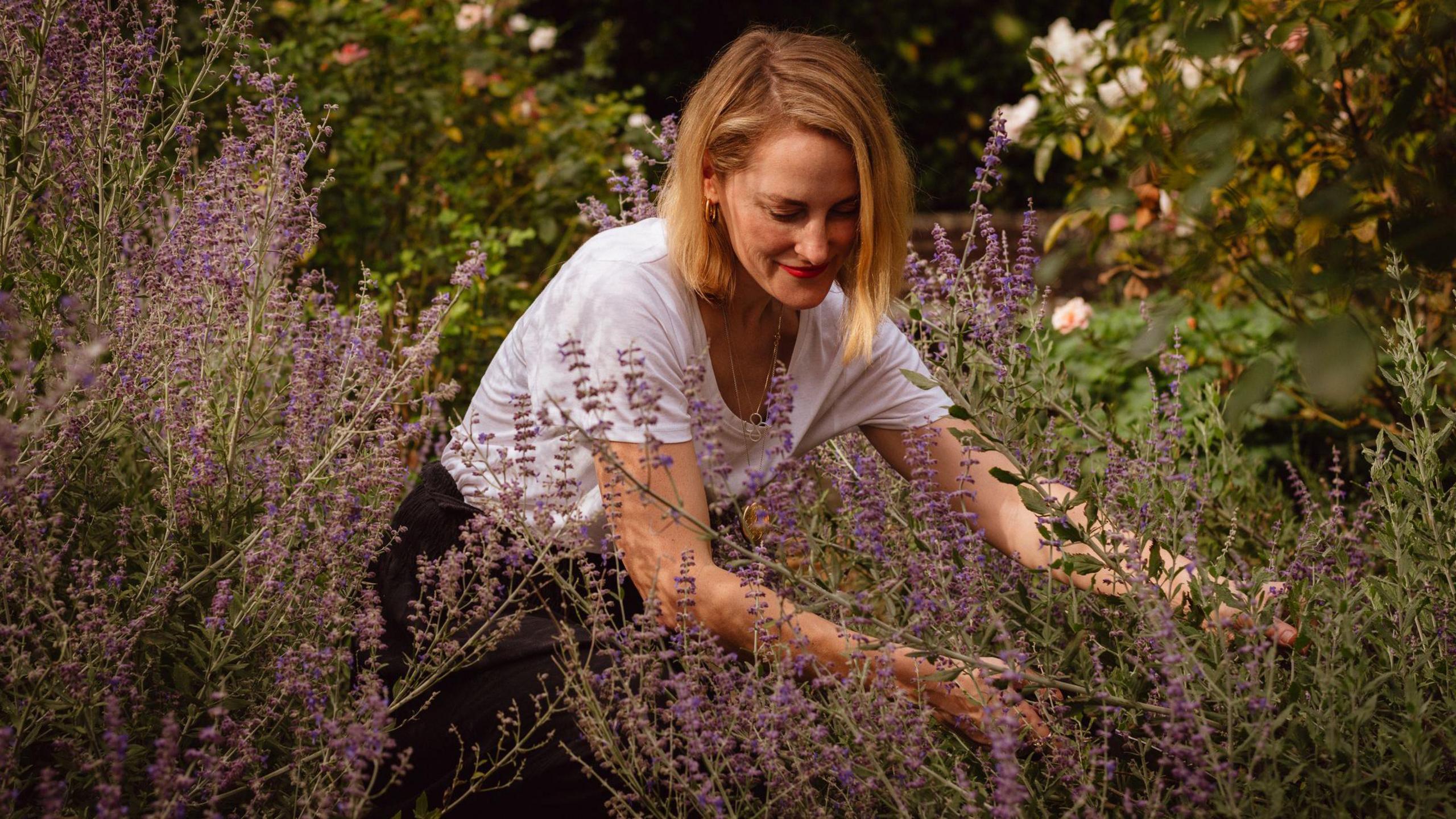
Louise Avery says she was taught how to forage by her mother when she lived in the Hebrides
"The golden rule is never strip a plant. You generally take a handful. You've got to let it regenerate."
Ms Avery says she uses the ingredients she forages as inspiration for her products at L.A. Brewery.
And after creating recipes in her kitchen, she shares them online.
"It's knowledge that's lost," she said. "People don't often feel confident foraging. It's teaching people about nature.
"My whole ethos is if you have access to it, use it."
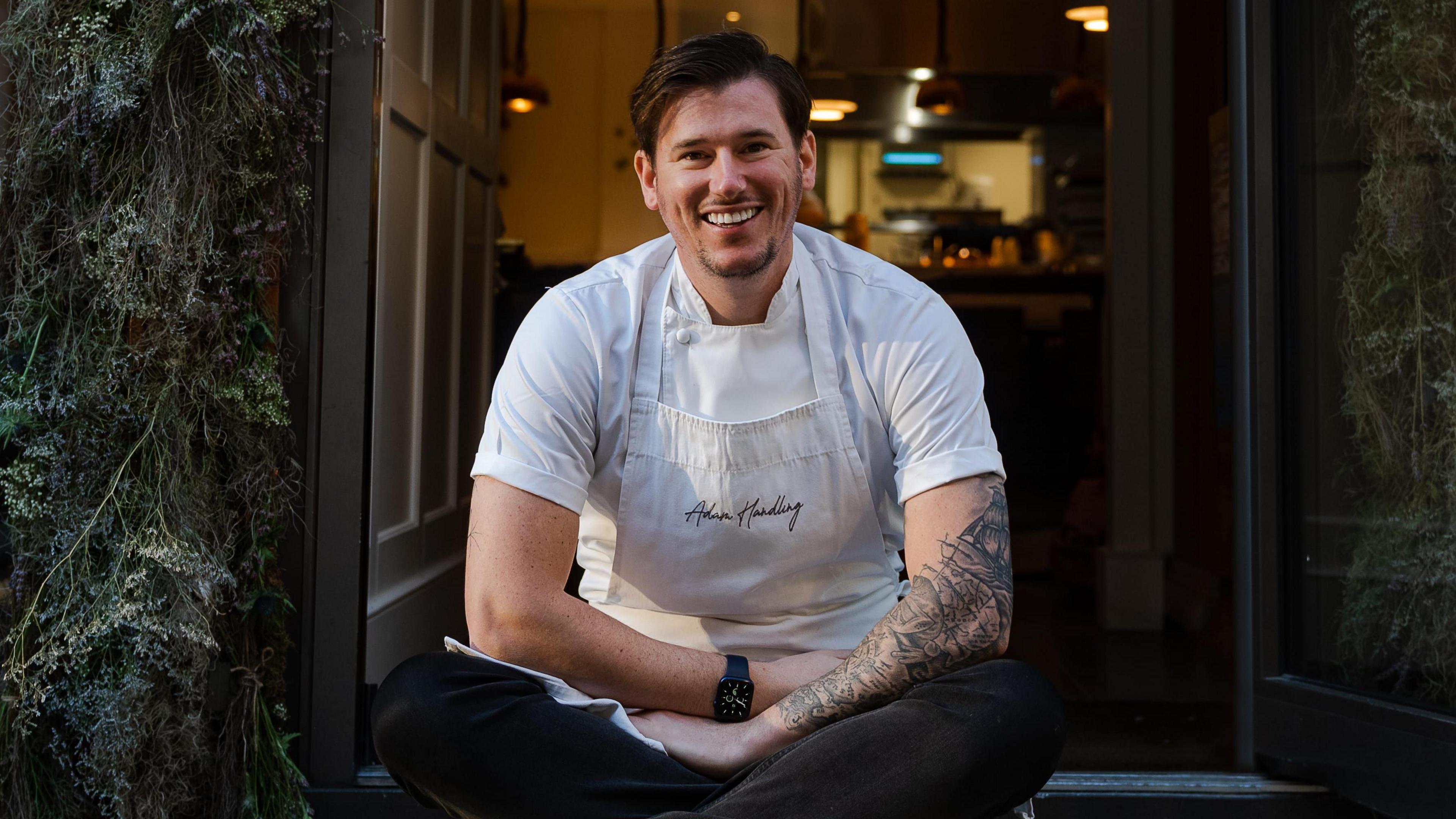
Adam Handling says his team use foraging ingredients in his Michelin-star restaurant in Covent Garden
Michelin-starred chef Adam Handling has been using foraged meadowsweet, which he uses to replace vanilla, since he opened his restaurant The Frog in east London in 2016.
"Wild foods are available only a certain amount of time, if you don’t use them, they’ll only die back and go to waste," he said.
His team now use foraged foods across all of his restaurants in London, Windsor and Cornwall.
"A long as you don’t pull the roots out, herbs, shrubs and flowers will continue to grow," he added.
"We’re very careful about the quantity of blossoms that we take.
"From the Clapham area we forage for edible flowers for the restaurant including mustard flowers, forget me nots, elderflowers and their berries, wild garlic and chive flowers. We also preserve these to use outside the growing season."
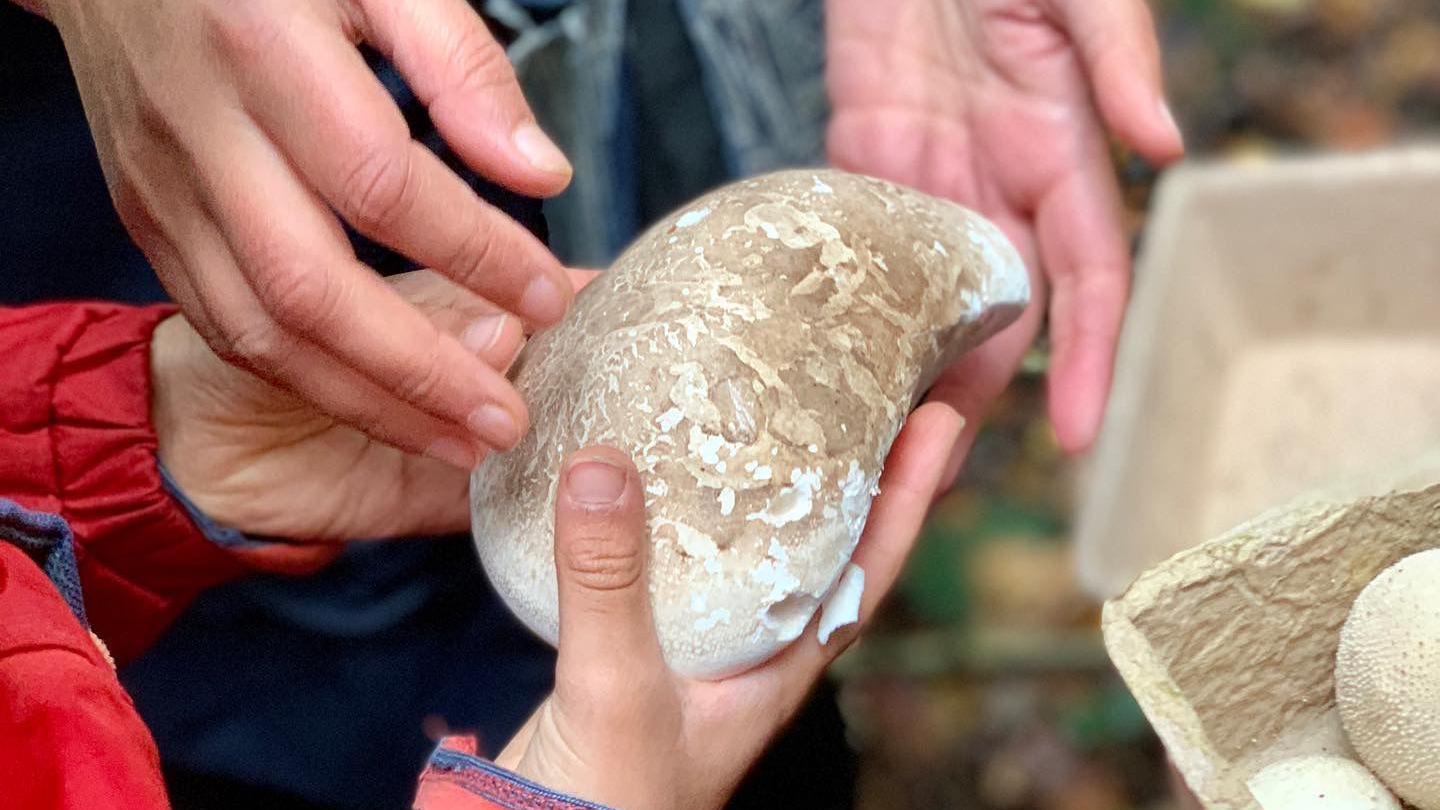
Ellora Coupe forages for mushrooms once a year on Wimbledon Common with her children
Ellora Coupe, who lives in south-west London, says she forages for mushrooms once a year on Wimbledon Common with her children.
"The biodiversity of the land we live on, and what it offers us is a really important message for me to pass on to my children, so I make sure we go every year at this time," she says.
"I remember picking mushrooms with my Dad in Austria as a child.
"I loved the joy of hunting for something that appeared when the conditions were just right that nature provided.
"It reminds us that we have everything we need right at our fingertips.
"My Dad loved Wimbledon Common and I grew up here, so it's a lovely activity to remember him by."
'Stricter rules'
Ms Coupe says that each year she applies for a one-day foraging permit through the ranger team at Wimbledon and Putney Commons.
The parks have a code of conduct for fungi collection, limiting the amount of mushrooms that can be collected to 250g (just under 9oz) per person.
"I know what mushrooms to look for and the puff balls usually grow in the same place every year and are easy for my kids to find and cook and prepare," Ms Coupe says.
She says it is hard to forage in London as "there are stricter rules on what and where you can collect".
"The rangers office is amazing for managing foraging for locals," she adds. "I haven't heard anywhere else in London that manages it."

The Royal Parks says foraging is not allowed in Richmond Park, which is a designated Site of Special Scientific Interest
A spokesperson for the Wimbledon and Putney Commons Conservators (WPCC) said they were currently reviewing their fungi collection permit.
"Fungi are a significant part of the eco-system of the Commons and their unauthorised collection is an offence under our Byelaws.
"As owners and managers of a Site of Special Scientific Interest and a Special Area of Conservation, [we] have to be mindful of the potential damage that foraging can cause to these rare and important habitats."
Foraging is not allowed in London's eight Royal Parks; Hyde, The Green, Richmond, Greenwich, St James’s, Bushy, The Regent’s Parks, and Kensington Gardens.
It has also been banned in Epping Forest under City of London Corporation bylaws.
Can you survive on foraged food?
- Published31 August 2019
Mr Rensten says he thinks the Royal Parks have taken a "strange stance" on foraging, and previously encouraged the organisation to focus on education rather than a "blanket ban".
"They're not allowing people to engage with nature," he says.
A spokesperson for the Royal Parks says they encourage park visitors to "help nature thrive by observing and enjoying the beauty of the parks without taking anything away".
"Trees and wood; plants, flowers, fruit and nuts; and fungi play a crucial role in the balance of the ecosystem in all the parks and are an important food source for wildlife," they say.
"This is especially important in Richmond Park and Bushy Park which are designated Sites of Special Scientific Interest and where wild deer roam freely."
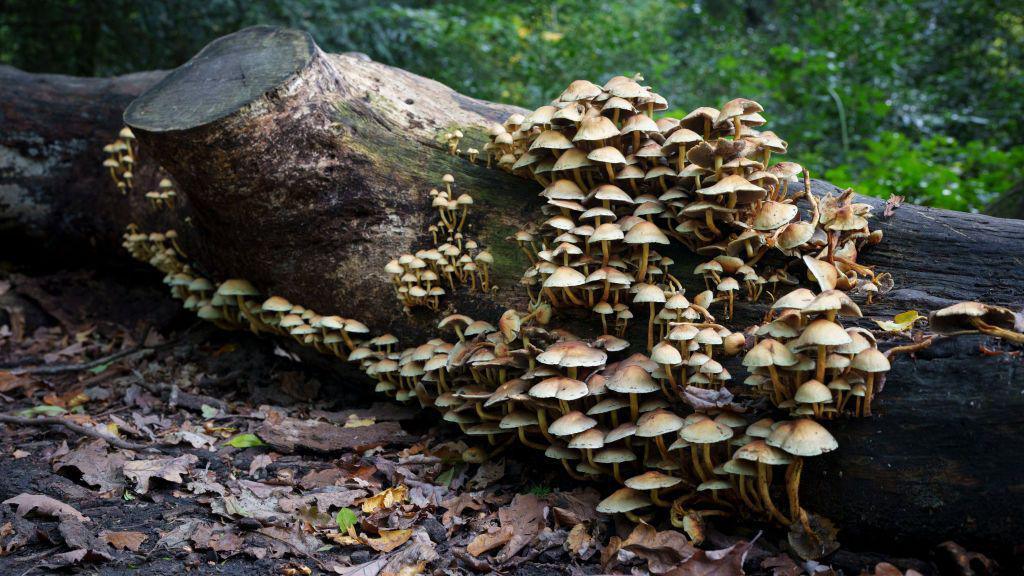
The Woodland Trust says people should never consume a wild plant or fungus unless they are absolutely certain of its identification
The National Trust view on foraging is that it helps people connect with nature but it must be done carefully and only for personal use.
"Excessive foraging, or foraging on protected sites, such as Special Sites of Scientific Interest (SSSI), can be detrimental to our precious wildlife and negatively impact delicate ecosystems," a spokesperson for the organisation says.
"Excessive foraging removes nature and beauty from places so others cannot appreciate them."
The organisation urges foragers to follow the Countryside Code, external - respect, protect and enjoy.
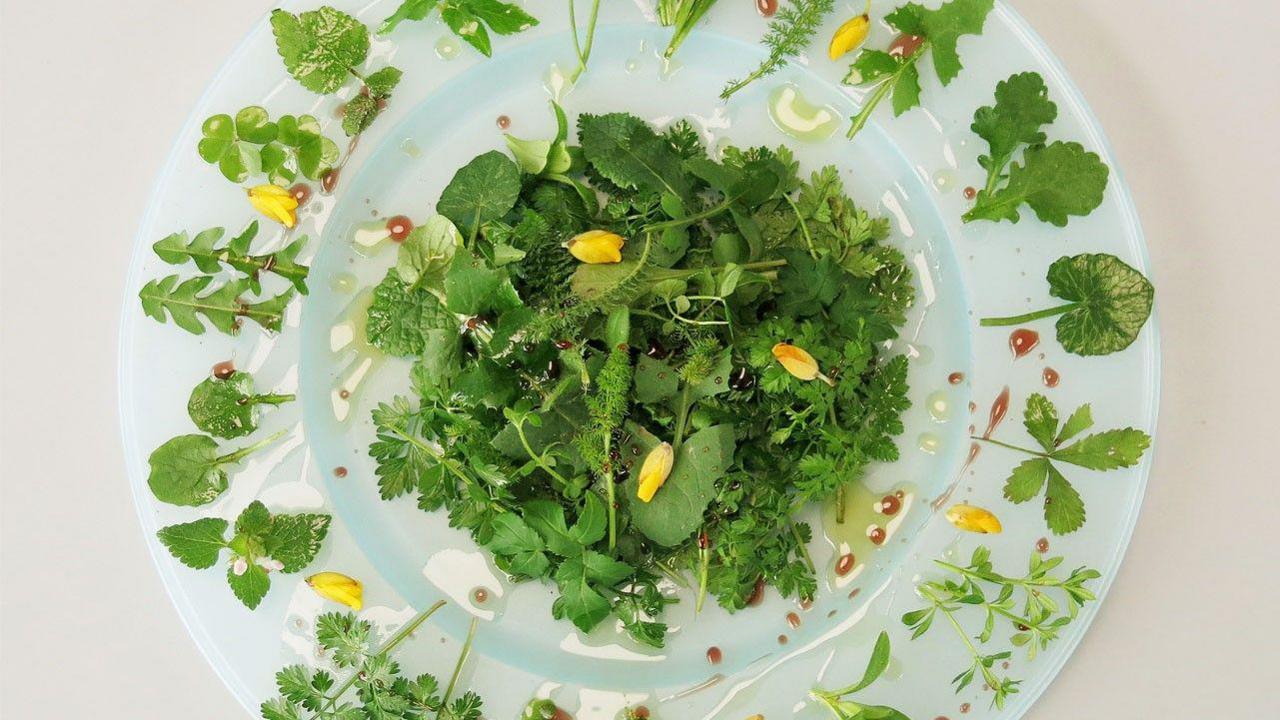
Mr Rensten says salad plants get a "second flush" in autumn
Mr Rensten said he was not concerned that over foraging could pose a risk to the capital because the majority of people who do collect food do it sustainably for personal use.
"People tend to stick to their local patch," he says. "If we were to write a list of threats to London, it would be low on the list.
"People who are involved in foraging will be doing it sustainable because they want to go back."
"At this time of year you can forage for salad plants," he adds.
"Stinging nettles are a come again plant. Cow parsley, sorrel too. Strangely you can pick a lot of salads now," he says.
They get a "second flush" in autumn, he says.
"I'm kind of in a permanent state of foraging."
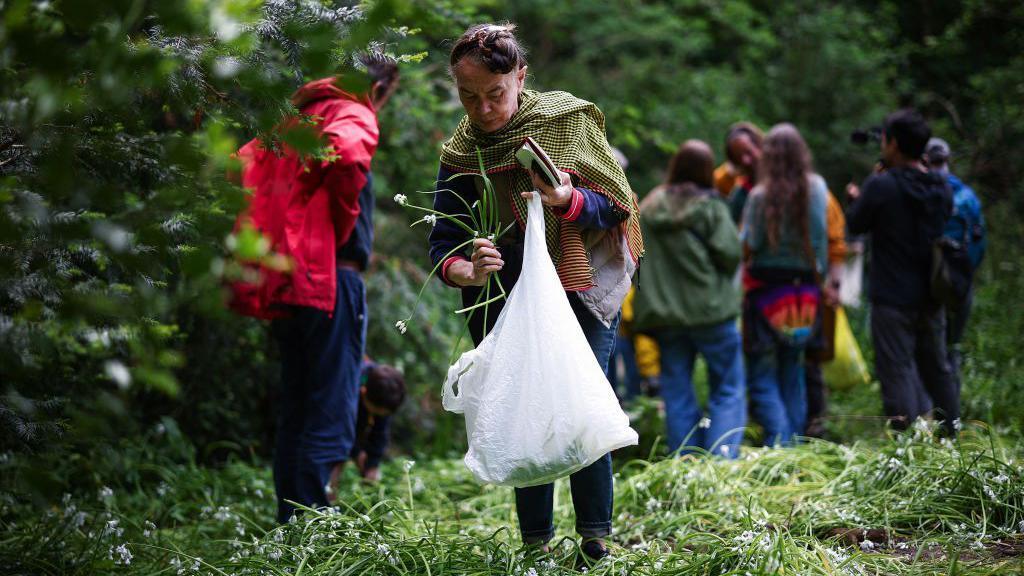
Foragers are encouraged to abide by the Countryside Code
What is foraging?
Foraging is the gathering of wild food for free. It is legal in public spaces in footpaths, but not on private land without the landowner's permission.
The Woodland Trust, external says responsible foraging means only collecting food for personal use and leaving plenty of plants behind.
It says people should never consume a wild plant or fungus unless they are absolutely certain of its identification.
This can be helped by foraging with field guide to confirm species and avoid confusion, the Woodland Trust says.
Some species are specially protected against picking, uprooting, damage and sale under the Wildlife and Countryside Act, external.
Listen to the best of BBC Radio London on Sounds and follow BBC London on Facebook, external, X, external and Instagram, external. Send your story ideas to hello.bbclondon@bbc.co.uk, external
Related stories
- Published31 October 2023
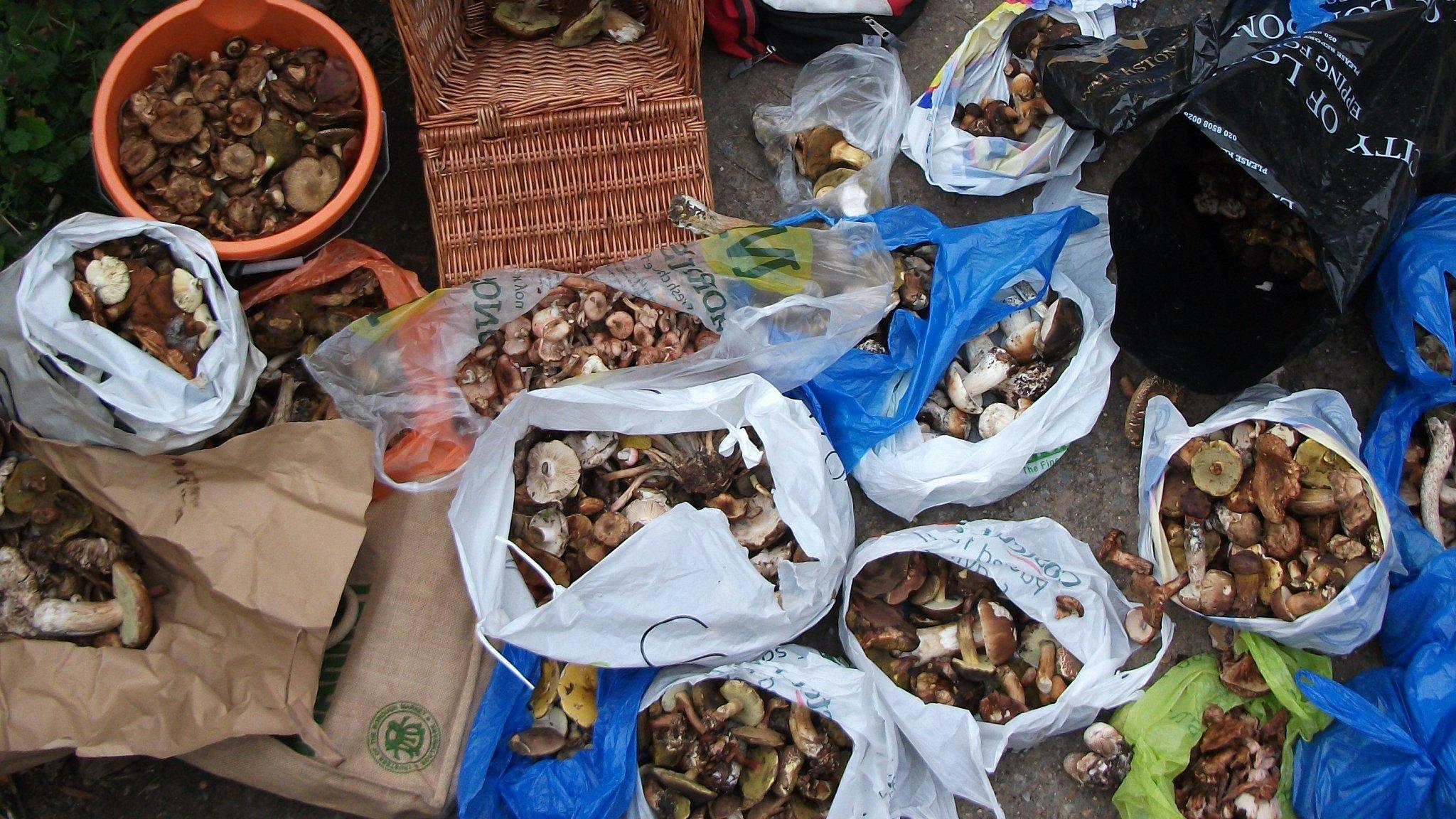
- Published20 January 2020
